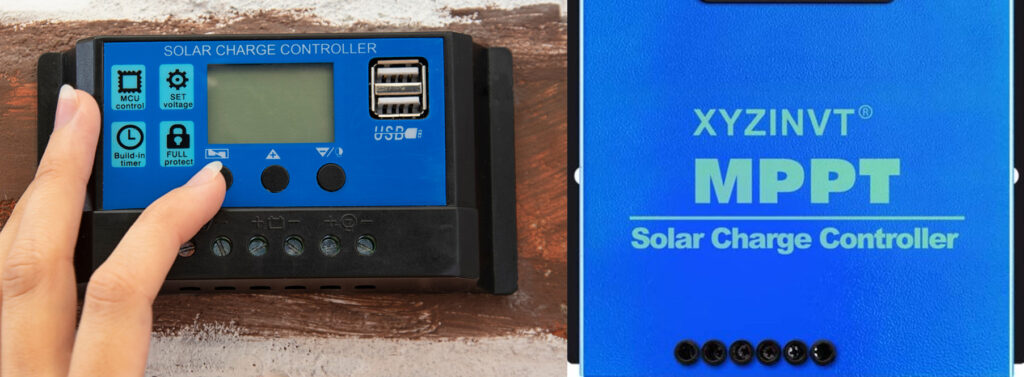When you go shopping for a charge controller for your solar system, you’ll find two types: PWM and MPPT charge controllers.
You might be tempted to pick a PWM controller because it’s cheaper, but it’s probably not the best choice for your setup.
While MPPT and PWM charge controllers do the same thing — regulate voltage and current coming from the solar panels and into the batteries — they do it differently. MPPT does it better and usually harvests more power from solar panels compared to PWM.
In this solar guide, we break down the differences between MPPT and PWM solar charge controllers and discuss which one to pick for specific situations.
Why Do You Need A Solar Charge Controller?
Before we get into the weeds of PWM and MPPT charge controllers, let’s start with why you need a solar charge controller in the first place.
Skip this section if you are already familiar with the utility of solar charge controllers.
In almost all situations where you need to connect solar panels to batteries, you need a charge controller. Only in cases where you are setting up a very small system (e.g a 1-5W solar panel for trickle charging or to power a lamp) can you omit a charge controller.
Generally, if you have less than 2W of solar output for each 50Ah of battery capacity, you can do without a charge controller.
But most solar systems, even small ones in vans and RVs must be wired with a solar charge controller.
A charge controller regulates power coming from the solar panels and into the batteries. It’s wired between the solar array and the battery bank.
Without a charge controller, solar panels could deliver too much voltage or current to the battery, which reduces its lifespan and can turn into a safety hazard.
PWM Charge Controllers
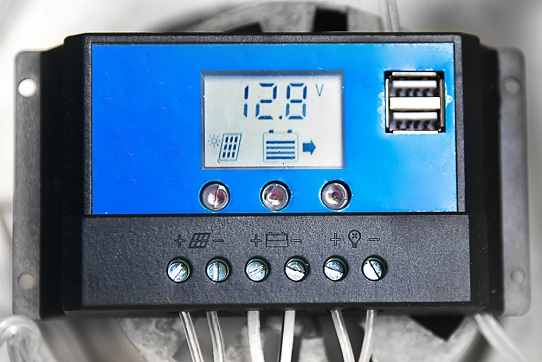
There are actually three types of charge controllers. In addition to PWM and MPPT charge controllers, there are shunt charge controllers.
Shunt regulators are basic on/off switches and are no longer used in solar systems. That’s why we are focusing only on PWM and MPPT controllers.
PWM (pulse width modulation) controllers are the cheaper of the two most common types of solar charge controllers.
A PWM controller charges the battery in stages starting from the bulk charging stage, then the absorption charging stage and finally the float charging stage.
As battery capacity increases, a PWM charge controller reduces input voltage to prevent overcharging the battery. At the float charging stage, only a little current trickles in to keep the battery charged.
A PWM charge controller does a much better job protecting the battery compared to the old fashioned shunt style regulators.
But that’s pretty much all it does.
A PWM charge controller doesn't charge your batteries any faster. That’s because it draws current from the solar panel at just above the battery voltage.
It doesn't matter how much extra voltage the solar panels produce, the batteries still charge at the same speed.
Advantages of PWM Charge Controllers
Disadvantages of PWM Charge Controllers
More on the last point. Because of this matching voltage requirement, a PWM controller can only be wired to parallel-connected solar panels in most situations to avoid exceeding battery voltage.
This comes with another downside: high current.
Connecting solar panels in parallel increases the number of amps produced. To handle the high current, you have to use thicker wires, which can significantly increase the cost of a solar system.
MPPT Charge Controllers
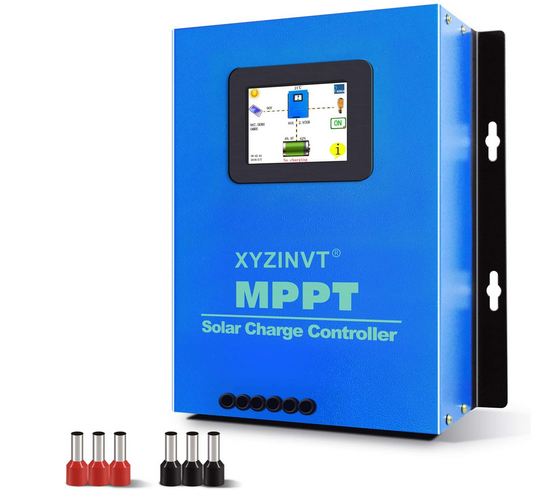
MPPT charge controllers are the best for most people setting up a solar system. They are more efficient, and thus charge batteries faster especially in cold and cloudy areas.
MPPT stands for maximum power point tracking.
An MPPT charge controller constantly tracks a solar array’s maximum voltage output. It then steps down the voltage to match battery voltage and converts the excess voltage into additional current.
That’s how an MPPT charge controller is able to charge a battery faster.
I’ll show you the stark difference between PWM and MPPT controllers with some numbers.
Let’s say you have a 12V solar panel with max current of 5 amps and max voltage of 18V. You’ve connected it to a 12V battery.
A PWM charge controller will draw current at just above the battery voltage, around 13V.
Power harvested from the solar panel will be 13V x 5A = 65 watts.
Let’s switch the PWM controller for an MPPT charge controller. It’ll draw current at the maximum voltage.
Now, power input from the solar panel will be 18V x 5A = 90 watts. That’s about 27% more output.
In real world conditions, solar panels voltage output constantly fluctuates. So you won’t get 18V all day. But still, at the end of the day an MPPT charge controller will have harvested more power from the solar array because it is always tracking the highest power point whether it’s 18V, 15V or 13V.
In a small setup like a camper van, the higher efficiency of an MPPT charge controller doesn't make much difference.
But for a sizable solar system like a hybrid or an off-grid solar system, it makes a huge difference. You’ll be able to squeeze significantly more power from your solar array with an MPPT charge controller.
In such a situation, an MPPT controller is worth the higher price tag.
Advantages of MPPT Charge Controllers
Disadvantages of MPPT Charge Controllers
How To Choose The Best Solar Charge Controller
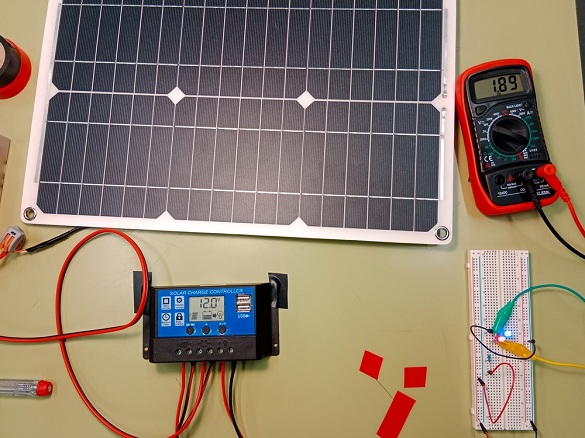
Get a PWM charge controller if:
Get an MPPT charge controller if:
How To Size Your Charge Controller
Charge controllers are sized in amps. The indicated amps refers to the max amount of current they can handle.
To calculate how much current will be flowing through the charge controller, you use battery voltage and solar panel power output.
Amps = Watts/Volts
If you connect a 100W solar panel to a 12V battery, current will be 100/12 = 8.3 amps. Add a safety margin and get a 10A charge controller.
A large 2000W solar array connected to a 48V battery bank will produce 41.6 amps. Add a safety margin and get a 50A controller.
But that can be hard to find - 60A charge controllers are more common.
Don’t forget to match the voltage of the battery and the solar charge controller. Most charge controllers these days can handle both 12V and 24V battery banks.
Some MPPT controllers can even handle all common voltages from 12V to 48V.
A Solar Kit Can Save You The Hustle Of Doing Calculations
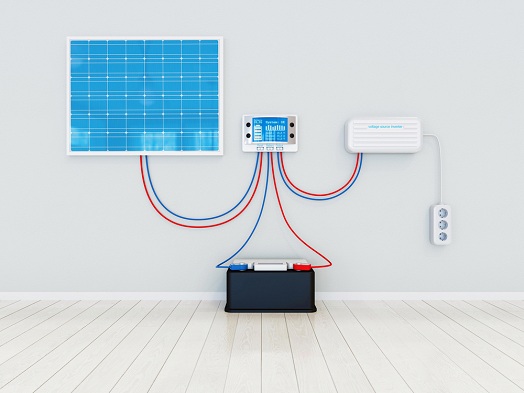
I’m not so good with numbers. Figuring out what solar charge controller size I need for a particular array size and battery bank gives me a headache.
If you are like me, you’ll love pre-configured solar kits from ShopSolarKits.com.
They have done the crunching for you and have put together a kit with all the components you need. You just need to wire everything as directed and you are good to go.
You can get a custom kit from as low as 1000W and up to 12000W and above.
And if you don't want to do a lot of wiring, they also have solar generator kits with a solar generator of your choice combined with solar panels. The only wiring required is from the solar panels to the power station.
Frequently Asked Questions
Can I use a PWM charge controller with a lithium battery?
Most PWM charge controllers these days are compatible with all battery types including lead-acid and lithium, as long as they have matching voltage.
But check the product specifications to be sure. Some older charge controllers can only be used with lead-acid batteries.
Can a charge controller work without a battery?
No, it cannot. You must have a battery to use a solar charge controller. Otherwise, you could damage the controller.
In fact, when wiring a charge controller it is crucial to first connect it to the battery and then the solar array.
How long does a solar charge controller last?
Both MPPT and PWM charge controllers have an average lifespan of 10-15 years.
Do I need a special charge controller for a lithium battery?
No you don't. Most PWM and MPPT charge controllers in the market can be connected to a lithium battery.
How many watts can a 60 amp charge controller handle?
It depends on the battery voltage. The higher the voltage, the more watts the controller can handle.
A 60A charge controller connected to a 12V battery bank can handle up to 720W (12x60). A 24V 60A controller connected to a 24V battery bank can handle double the power - 1440W.
Can a solar charge controller be too big?
An oversized charge controller won’t hurt your solar system, but it’s a waste. Unless you plan to expand your solar array in the near future, get a charge controller that can handle the amps in your system + 25%.
The 25% margin is enough for safety.

